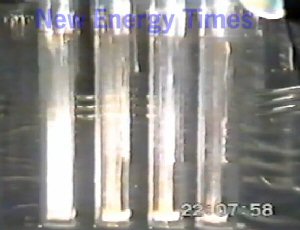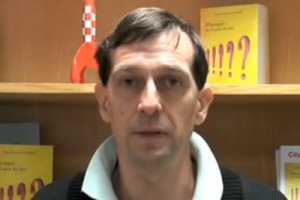
Aug. 24, 2015 – By Steven B. Krivit –
For the first time in two decades, the Japanese government has issued a request for proposals for low-energy nuclear reaction (LENR) research, according to information recently obtained by New Energy Times.
The request for proposals was published by the New Energy and Industrial Technology Development Organization (NEDO), a national research and development agency.
The request for proposals, "Energy and the Environment New Leading Technology Program," was released in July. The line item for the LENR research is on PDF Page 16, item D4. The item translates to "Metal which becomes new energy source and analysis and control of the technology of heat reactions between metals and hydrogen."
New Energy Times spoke with Aya Iwasuji, at the Silicon Valley office of NEDO, and exchanged several e-mails with her about the program, which is also funding 10 other areas of new-energy research.
"The budget for this program this year is ¥3,410,000,000 [$27 million]," Iwasuji wrote.
In response to a request for more details about item D4, Iwasuji referred New Energy Times to NEDO’s Japan headquarters. A NEDO representative responded on Aug. 13.
"Unfortunately," the representative wrote, "we can’t give you any information about item D4 other than the title that you see at the Web site. We decided the title based on information from another organization which has agreed to non-disclosure. We appreciate your understanding."
The request for proposals had been at the Japanese NEDO site at this location. Between the time we made our inquiry and the time we published this article, the file was removed. New Energy Times preserved a copy here.
In a response to an e-mail from New Energy Times, long-time LENR researcher Tadahiko Mizuno confirmed that item D4 is for LENRs. Some Japanese LENR researchers, according to Mizuno, are filing a joint application to NEDO, with the assistance of Akito Takahashi, a former professor at Osaka University.
Takahashi has also been affiliated with Technova, a member of the Toyota Motor Corp. family of businesses. Takahashi did not respond to an e-mail from New Energy Times.
In June 2014, according to the application guidelines, the Japanese government announced the program objectives in "Japan Revitalization Strategy — Japan’s Challenge for the Future." Since the tsunami that caused the failures at the Fukushima Daiichi reactors in 2011, the Japanese government has been under pressure to provide its citizens with alternative energy sources.
NEDO is part of the Japanese National Research and Development Agency. NEDO’s objectives are to "solve energy problems through integrated management of technology development from the discovery of technology seeds to the promotion of mid- to long-term projects and support for practical application."
Major Japanese corporations, including Toyota Central Research Labs and Mitsubishi Heavy Industries, have been active in LENR research for more than a decade. In 1994, the Japanese government, through the Ministry of Trade and Industry, sponsored an earlier research program called the New Hydrogen Energy Agency. It ran for several years at a cost of several million dollars. It terminated after researchers reported lackluster results.
In 2013, Toyota published a confirmation of Mitsubishi’s LENR transmutation results in the peer-reviewed Japanese Journal of Applied Physics.
Questions? Comments? Submit a Letter to the Editor.





